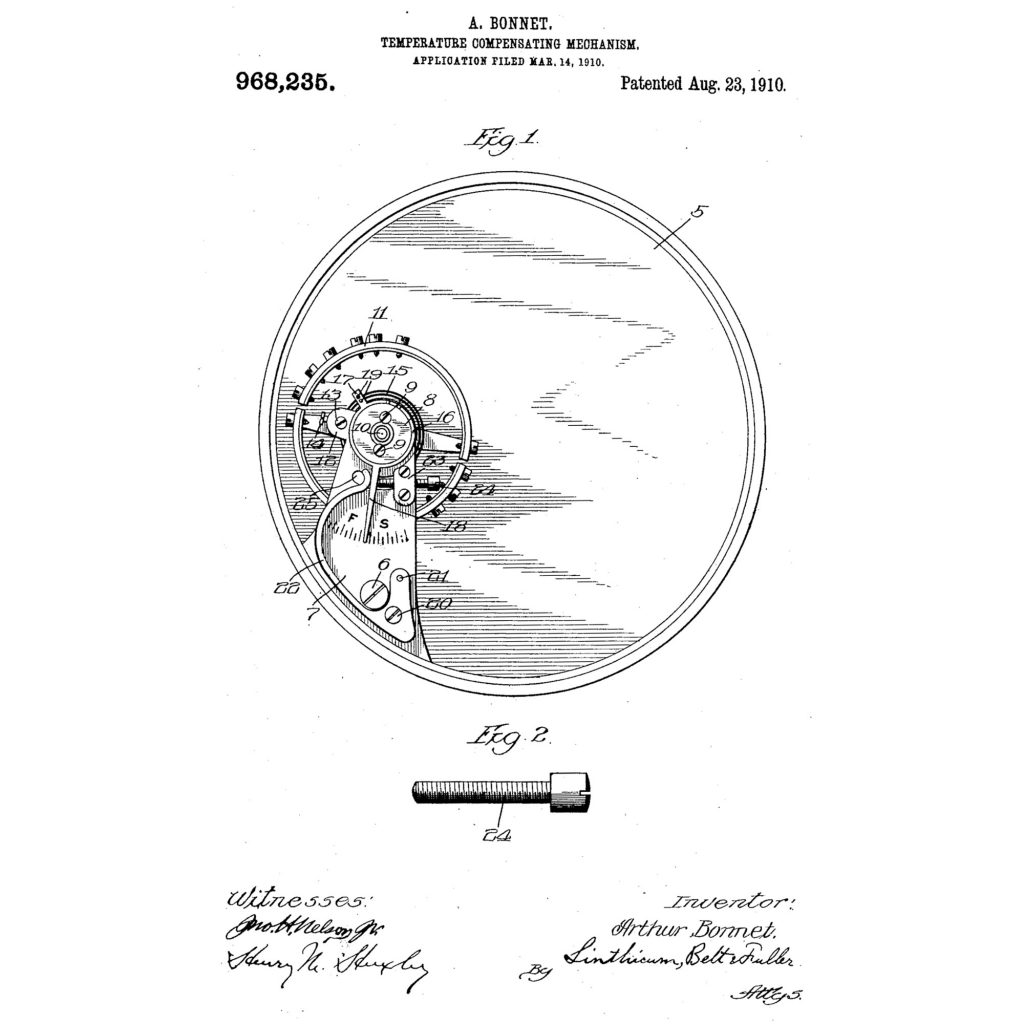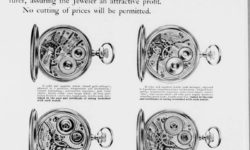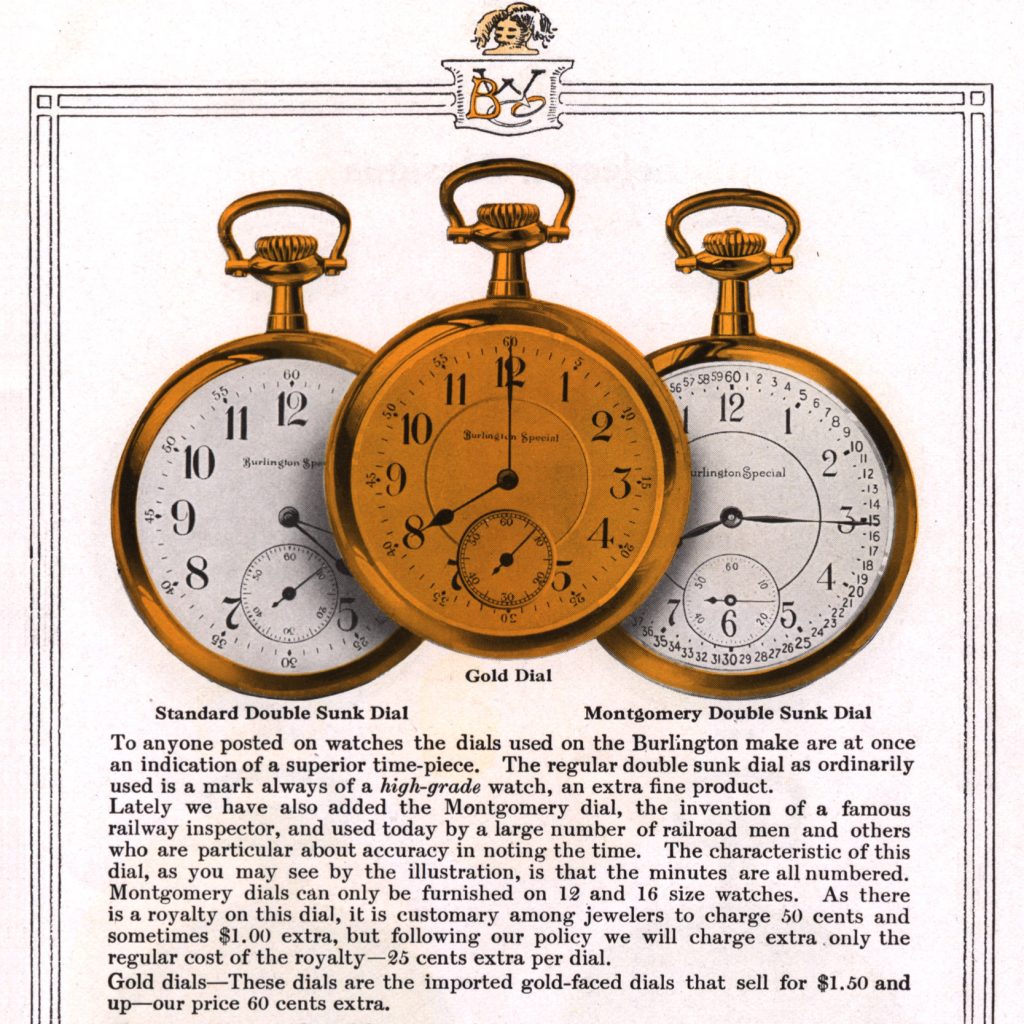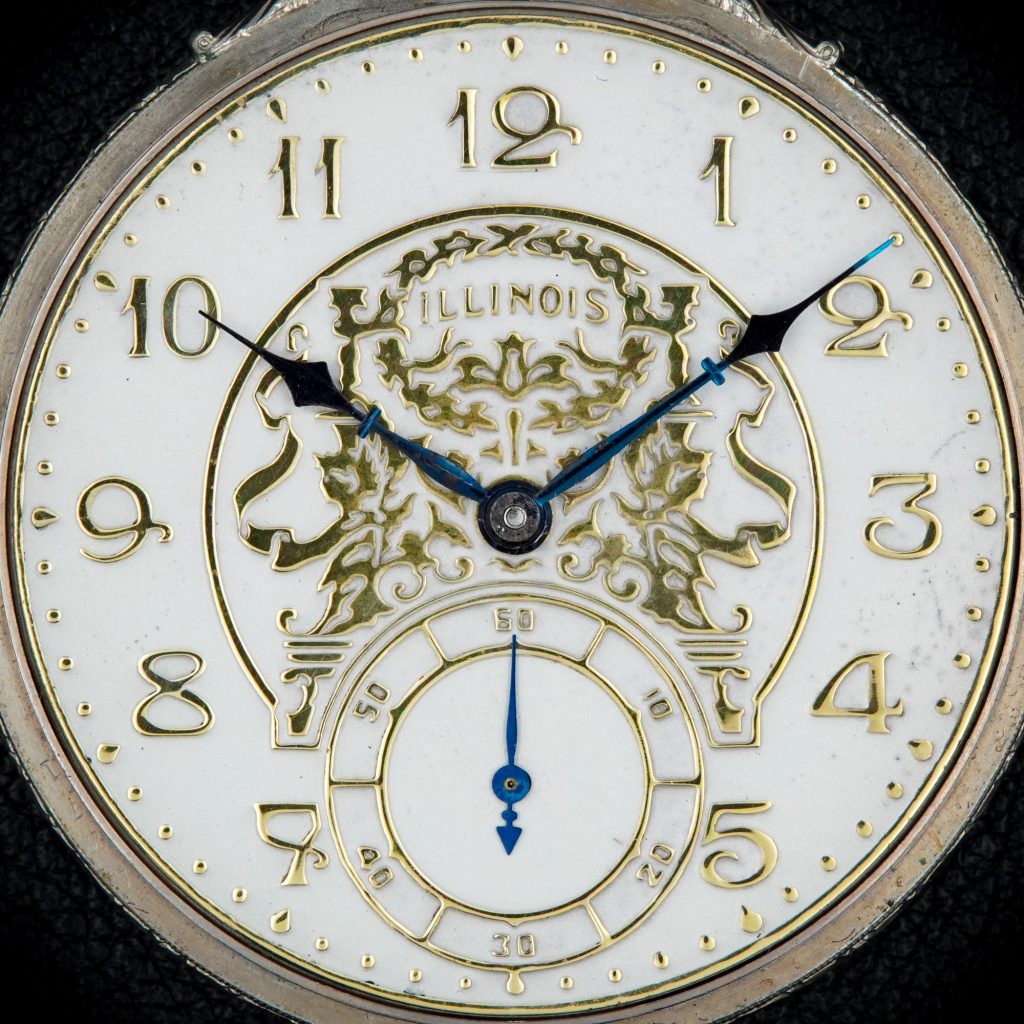Private Label Trade Names on American Pocket Watches: The Lincoln Watch & Jewelry Company: Part 8: The Patented Temperature Compensating Regulator Screw

In 1910, the Lincoln Watch & Jewelry Company secured a patent for an improvement to the regulator used on its watches, designed to provide additional temperature compensation.
The patent was issued to Arthur Bonnet on August 23, 1910, and was immediately assigned to the Lincoln Watch & Jewelry Company.
The essential design relies on a regulator tension screw composed of softer steel with lower carbon content than standard tempered steel. The result is the screw lengthens when the temperature is warmer, causing the regulator to move slightly to shorten the effective length of the hairspring. The opposite is true in colder temperatures. The length of the screw shortens slightly, moving the regulator to increase the effective length of the hairspring. The regulator positions are precisely implemented to provide a compensation effect on the tension of the hairspring resting within the regulator pins.
It is unclear whether additional temperature adjustments were applied to the expansion balance to equalize the effect provided by the patented regulator screw. The patent documentation makes no mention of the natural temperature compensation properties of the bimetallic balance wheel.




2 Comments